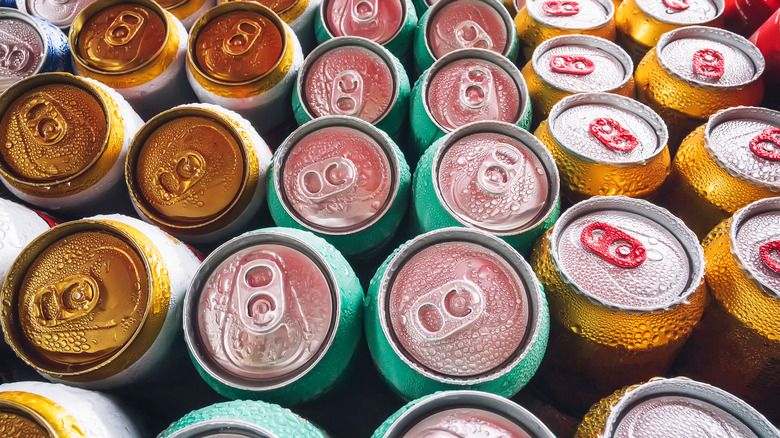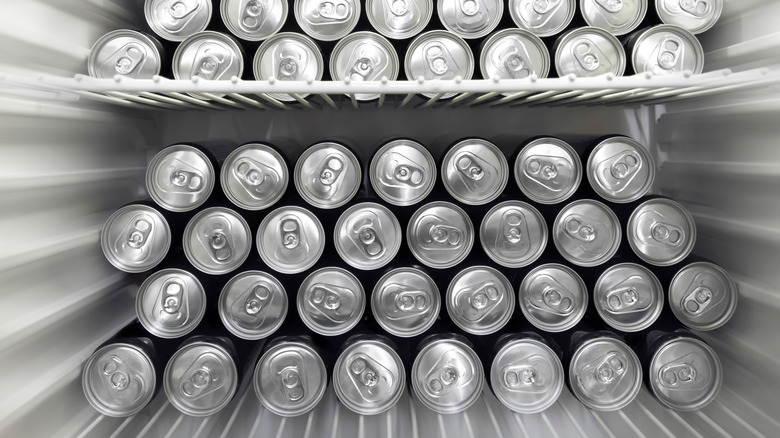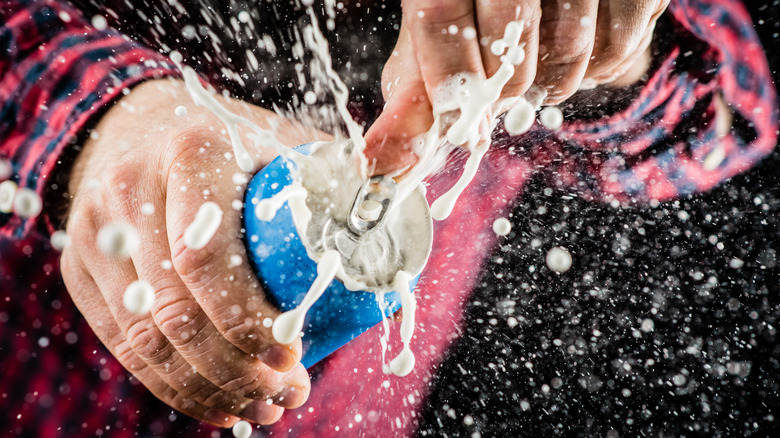How Long Does Unopened Canned Beer Take To Expire?
Unearthing a forgotten can of beer in the back of your fridge can be a nice surprise, but only if it's still in its prime. That's right, brews don't last forever, which is why it's actually important to check beer expiration dates as a first step to determine if your beer has expired. But, instead of viewing these dates as markers of spoilage (like you would for dairy or prepared meals), think of them as indicators of freshness, similar to the dates on spices.
That's because "expired" beer is still generally safe to drink. The difference is that your favorite beverage might not taste like itself after it sits for a long time. IPAs are particularly vulnerable to time, as the aromas imparted by hops fade fast. That kind of beer, along with pilsners and other light wheats, will lack their trademark floral and citrus notes but remain bitter as they age. As such, craft beer enthusiasts often find light beers taste best in the first few days, if not weeks, of packaging since the flavors are at their peak.
That being said, on the whole, New England-style IPAs, pilsners, lagers, and other light wheats should have a shelf-life of four to six months. And heavier IPAs and ales last about six to nine months. But these windows can change depending on how you store the beverage, as temperature can speed or slow oxidation.
Keep your brews cold to make them last longer
It's always best to keep your beers chilled if you want to have a longer chance to drink them. That's because heat will cause them to expire much faster. Just three days in your car's trunk or your garage on a 90-degree Fahrenheit day can essentially age your beer by a month. This is what producers refer to as the "3-30-300" rule. Three days in sweltering conditions has the same oxidation effect as storing cans for 30 days at room temperature or 300 days in a chilly space.
So, to keep the flavors fresh and bright, keep beer cans in the refrigerator. Lower temperatures can extend the expiration date and keep many brews fresh up to eight months. Some sours, smoked styles, and drinks with a high alcohol content, can last even longer in a cool environment. And robust brews like barleywine beer and imperial stout, for example, may taste better after being carefully aged for up to a few years.
Drinkers often worry that allowing cans to warm up and then returning them to the fridge can ruin them or cause skunking (which is when your beer has that funky aroma), but most brewers agree this is not true. Skunking is caused by sunlight penetrating glass bottles, so you're unlikely to encounter the issue with cans. Though you'll get the best results from chilling the drinks until you're ready to crack them open, you can move them out of the cooler if you run out of space. And you should still never buy IPAs sitting on store shelves if you can help it.
How to tell if your beer has expired
Though a "bad" beer is subjective, there are off-putting tastes and cues to look out for to determine if your can has expired. Any type of draught can develop a stale, cardboard-like flavor and go flat over time as it's exposed to any oxygen trapped in the packaging. A batch can also turn unpleasantly sour due to certain bacteria getting introduced during the manufacturing process.
Another tell-tale sign of spoilage is if your can leaks or explodes. Creative craft brewery offerings in particular are vulnerable to the issue, as sweet experimental flavors can trigger the natural yeast to digest the drink's sugars and release extra carbonation. It's yet another reason to keep beer chilled, as it will slow the fermentation process overall.
You may also notice the body of the certain styles degrade. Wheat beers, for example, become watery. Even robust, malted brews that can better stand up to aging may eventually become thin and unpleasant to drink, which is why you should be thoughtful about how long you hold on to your collection.



